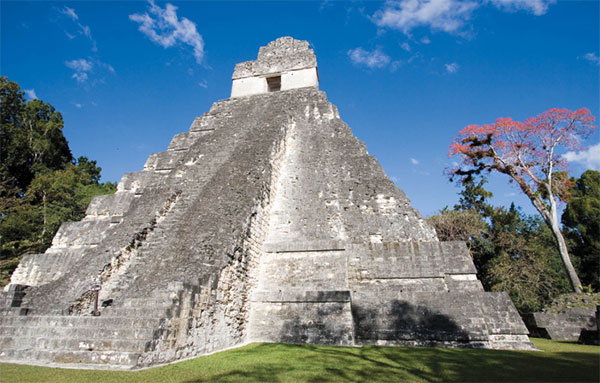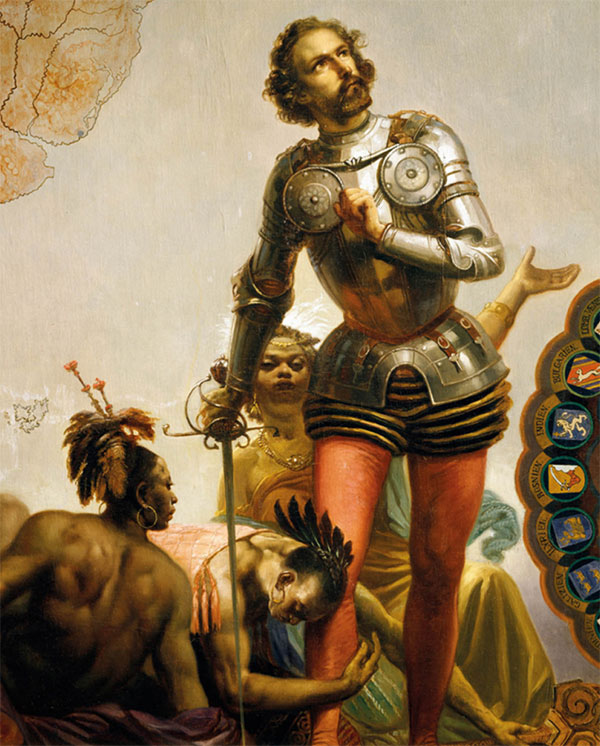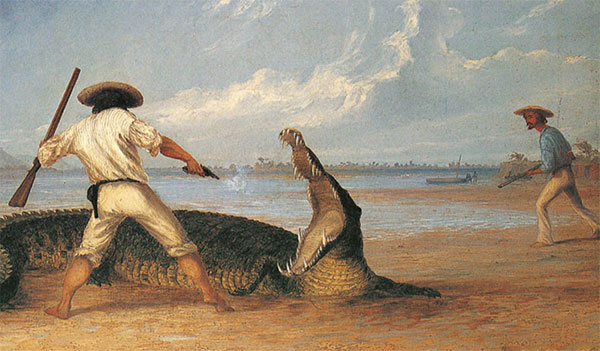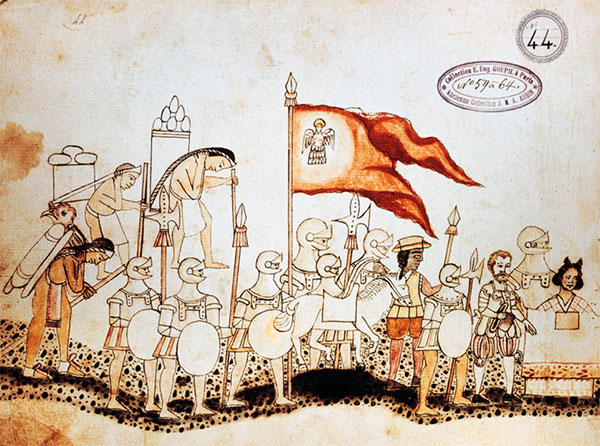INSIGHT: TIKAL
Possibly the most visually impressive of all the Maya cities, Tikal stands majestically in the Petén jungle, occupied now only by monkeys, toucans, and other exotica.
As the first sunlight filtered through the early morning mist, the high priest, Iahca Na, emerged from the inner sanctum of Temple I. Yik’in Chan K’awiil, waiting to be crowned the 27th ruler of the great city, was clad in jaguar pelt and jade jewels, awaiting approval from the shaman who had consulted the gods for their blessing. A discreet nod from the priest confirmed Yik’in Chan’s accession and the expectant multitude gathered in the plaza below erupted in celebration, heralding a new era for Tikal.
Cosmopolitan city
As you walk through the ruins today, it is easy to forget that Tikal was previously a thriving metropolis with a population of around 100,000. The Maya city was home to a multi-layered society: as well as the nobility there was a large middle class, comprising merchants, craftsmen, and bureaucrats, and a workers’ class, which included farmers, builders, and servants.
Tikal represents over 1,200 years of continuous construction. Wherever you stand, beneath your feet lie many layers of previous eras; more than 100 structures lie beneath the North Acropolis as we see it today.

Temple I: being closer to heaven, the small room at the top of the temples was used for sacred rituals and ceremonies.
Corrie Wingate/Apa Publications
Tikal’s natural wonders
In addition to its awesome archeological heritage, the Tikal National Park offers visitors one of the richest rainforest environments in Central America. The protected territory saves trees, hundreds of years old, from logging, and rare animals from both the black market and the dining table.
Tikal has an incredible variety of animal life, and as you wander around the site, you can tell that they have made it their home. Racoon-like coatimundis scurry around the undergrowth, and troupes of spider monkeys playfully pelt you with berries from the treetops. The park is also home to over 250 species of birds, such as the keel-billed toucan, the ocellated turkey, parrots, and eagles. Most thrilling of all are five of the world’s rarest wildcats that live in the area; you might be lucky enough to catch sight of a jaguar, puma, ocelot, jaguarundi, or margay. As you enter the site, pause by the Tikal reservoir, which is a good place to spot a turtle or even a small alligator.
EUROPEAN CONQUEST
As the Spanish subdued the Maya, they quickly overtook the continent, except for a stretch of Caribbean coast that was claimed by the British.
When Christopher Columbus set sail from Spain in 1492 on his first voyage to the New World, he was hoping to find a group of islands near Japan, which he conceived to be about 2,400 nautical miles (4,445km) to the west of Spain. There, he determined, he would build a great city and trade gold, gems, and spices from the Indies with the cities of Europe. He imagined himself as a rich governor, lord of it all.

A depiction of Hernan Cortes being honored by the conquered Indigenous people.
His ambitions coincided with the interests of the Spanish Crown. The wars to oust the Moors from Spain had depleted the royal treasury and the promise of the wealth of the Indies was very attractive indeed. On returning from his first journey to the New World, Columbus was given a grand reception. He was named Admiral of the Ocean Sea and was ordered to organize a second voyage to further explore Hispaniola.
His second and third voyages had mixed results, ranging from exploring the Atlantic coast of South America to being sent back to Spain in chains after a rebellion by settlers on Hispianola. Somehow, he persuaded the Spanish sovereigns, Ferdinand and Isabella, to agree to finance his fourth and final voyage to the Americas in search of gold and a passage to the West. He landed on the Bay Island of Guanaja on July 30, 1502. For the rest of the year, he charted the coastal area from Honduras to Panamá and named it Veragua. He was so enamored by the golden mirrors that the Indigenous peoples of Costa Rica wore about their necks, and by their many stories of gold and gold mines along the coast to the south, that he named the area the Rich Coast of Veragua.
The Indigenous peoples of Costa Rica, wearing gold necklaces, guided the Spaniards around the area, and spoke of great mines of gold – pointing south.

Baymen in the swamps, Belize.
Rich though it seemed to Columbus at the time, the newly discovered area was not to be a great, rich jewel in Spain’s crown. In fact, the ‘Rich Coast’ turned out to be one of the poorest of Spain’s American colonies. Impassable mountains, impenetrable forests, raging rivers, unbearable heat, floods, disease, swamps, shortages of food and of labor, internal rivalries, lack of natural resources, or a way to generate wealth all oppressed the settlers. They wore goat-hair garments or clothing made of bark; using cacao (chocolate) beans for currency; eking out a bare subsistence in the fields, and using native methods to cultivate crops. Columbus naively returned to Spain brimming with dreams of great riches and grandeur, to the point of asking the king to confer on him the title of Duke of Veragua, which was eventually granted to his descendants.
More expeditions
In 1506, two years after Columbus returned to Spain, King Ferdinand sent Governor Diego de Nicuesa and a group of settlers to establish a colony at Veragua. It was the first of many ill-fated attempts to establish settlements. Nicuesa’s ship ran aground in Panamá and he and his group set about walking up the coast to their destination. Food shortages and tropical diseases were acute; the terrain was devastating. Indigenous peoples along the way burned their own crops rather than yield their food. By the time the settlers finally arrived, their numbers had been halved.

Hernan Cortes (1485–1547) arriving in Mexico, from ‘The Codex Azcatitlan.’
Around this time, expeditions from Spain were landing throughout the Atlantic coast of Central America. They were capturing Indigenous peoples and sending them to work in the mines of Hispaniola, stealing their gold and desperately searching for a passage across the continent to the other ocean. Finally, in 1513, Vasco Nuñez de Balboa, a young stowaway escaping debts on Hispaniola, led an expedition across the isthmus and discovered the Pacific Ocean. It wasn’t long before rudimentary shipyards appeared on the Pacific coast to accommodate would-be explorers who had sailed into Atlantic ports and then walked across the isthmus, ready to set sail on the Pacific and continue their explorations. The unexplored Pacific had better anchorages, and was thought to have more gold.
The first Spanish expedition to land in the Maya world was led by Francisco Hernández de Córdoba in 1517. Hernán Cortés followed two years later. He landed on the island of Cozumel, where the first Christian Mass was said on the American continent.
One of Cortés’s lieutenants, Francisco de Montejo, returned to the Yucatán in 1527 to extend Spanish rule to the Maya living there. At first he was unsuccessful, both on the Caribbean coast near Campeche and on the Atlantic side. It was Montejo’s son and nephew who began a second conquest of the Yucatán in 1540, and this time the Spaniards succeeded in establishing their rule. In 1542 they founded the city of Mérida, and as in Mexico City, built their new cathedral directly on top of the ruins of a Maya temple.